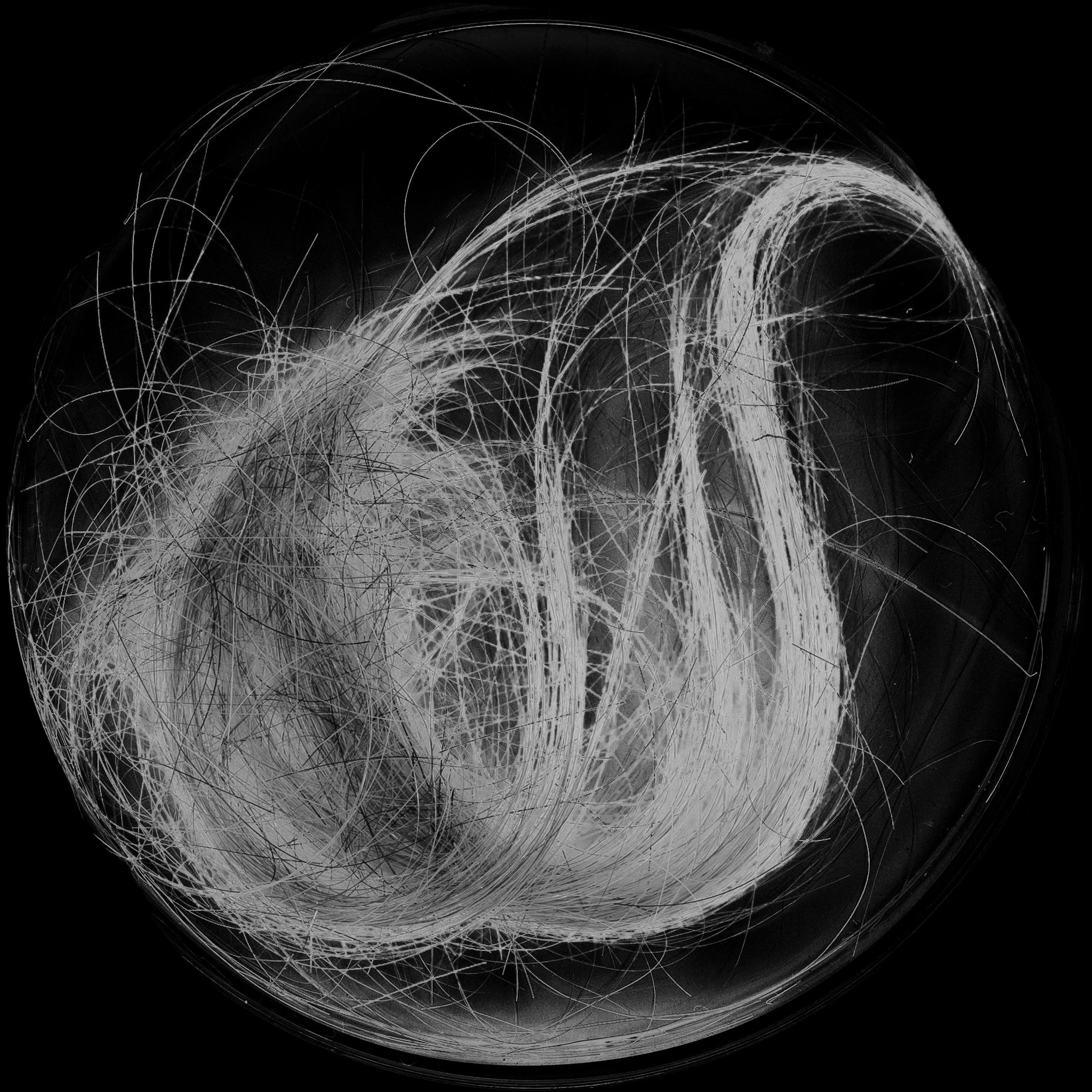human hair, 2024
human hair, 2024
FUTURE MATERIALS
What if aerosol technology unlocked new possibilities for human hair in material design?
3D RENDERING, C4D
This project reimagines human hair as a regenerative material, using FABRICAN’s aerosol technology to tackle the fibre industry’s 92 million tonnes of annual waste.
By replacing synthetic and animal-derived fibres, it challenges cultural stigmas and envisions new material applications. Speculative prototypes explore spray-on garment possibilities. In collaboration with chemical engineers at Imperial College London, the project proposes a future where waste becomes a resource, transforming perceptions and industry practices.
1 person
365 days
12.7km of hair average
7.8 billion global population
AEROSOL TECHNOLOGY
WASTE REDUCTION
Traditional textile manufacturing often results in material waste due to cutting and sewing processes. In contrast, Fabrican's spray-on technique applies fabric precisely where needed, minimising offcuts and excess material
RESOURCE EFFICIENCY
By eliminating intermediate steps such as weaving and sewing, the aerosol method streamlines the production process, potentially lowering energy consumption and resource use.
ON-DEMAND PRODUCTION
The ability to create garments directly on the body or moulds allows for customisation and reduces the need for large inventories, thereby decreasing surplus production and associated waste.
SOCIAL
Shift societal views of human hair from a discarded byproduct or identity marker to a valuable resource with regenerative potential.
Leverage high fashion and avant-garde design to normalise and elevate the use of human hair, targeting younger generations as early adopters.
Promote a circular mindset where hair is donated and repurposed rather than discarded.
TECHNOLOGICAL
Utilise technologies like Fabrican’s spray-on fabric to efficiently process and apply human hair for various industrial uses.
Scale technologies that use hair for oil absorption, improving deployment methods and reusability.
Scale R&D into techniques for sustainably removing and extracting chemicals like oil from hair for reuse.
Use AI and machine learning to design and prototype human hair products for maximum efficiency and minimal waste.
ENVIRONMENTAL
Mitigate textile and construction waste by introducing biodegradable, regenerative materials like hair into production cycles.
Establish systems for collecting and reusing hair, minimising landfill contributions.
Reduce the environmental footprint associated with producing synthetic or animal-based fibres by substituting human hair.
ECONOMIC
Create a market for human hair-based products in sectors like fashion, construction, and agriculture.
Expand the trade of unworked human hair, with key exporters like India and Singapore scaling operations sustainably.
Offset reliance on extractive industries like cotton farming or synthetic fibre production, reducing associated costs.
POLITICAL
Integrate human hair into national waste management strategies, promoting its reuse in environmental and industrial applications.
Advocate for policies incentivising sustainable material use and banning or taxing environmentally harmful fibres.
Develop industry standards for processing and using human hair to ensure safety, quality, and ethical sourcing
RESEARCH DONE IN COLLABORATION WITH @WAEL.ALK_
-
Available at: https://www.imperial.ac.uk/news/248975/hidden-feel-touch-uncovered-imperial-researchers/ (Accessed: 01 December 2024).
-
16(7). doi:10.1371/journal.pbio.2004404.
-
Social Identities, 22(5), pp. 537–553. doi:10.1080/13504630.2016.1157465.
-
Textile Research Journal, 92(23–24), pp. 4629–4638. doi:10.1177/00405175221106230.
-
56(12), pp. 3028–3035. doi:10.1002/aic.12478.
-
Available at: https://www.fabricanltd.com/ (Accessed: 01 December 2024).




